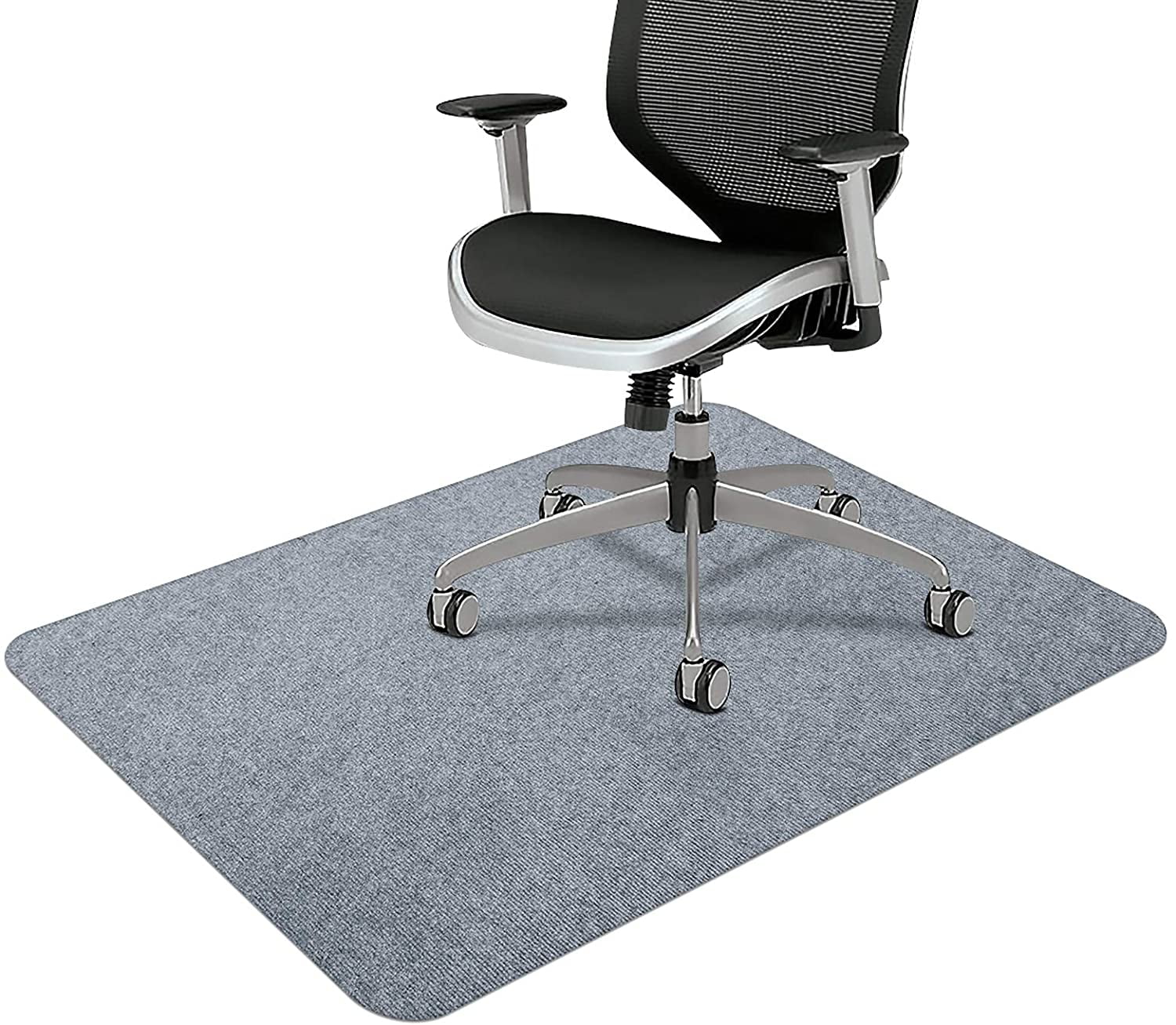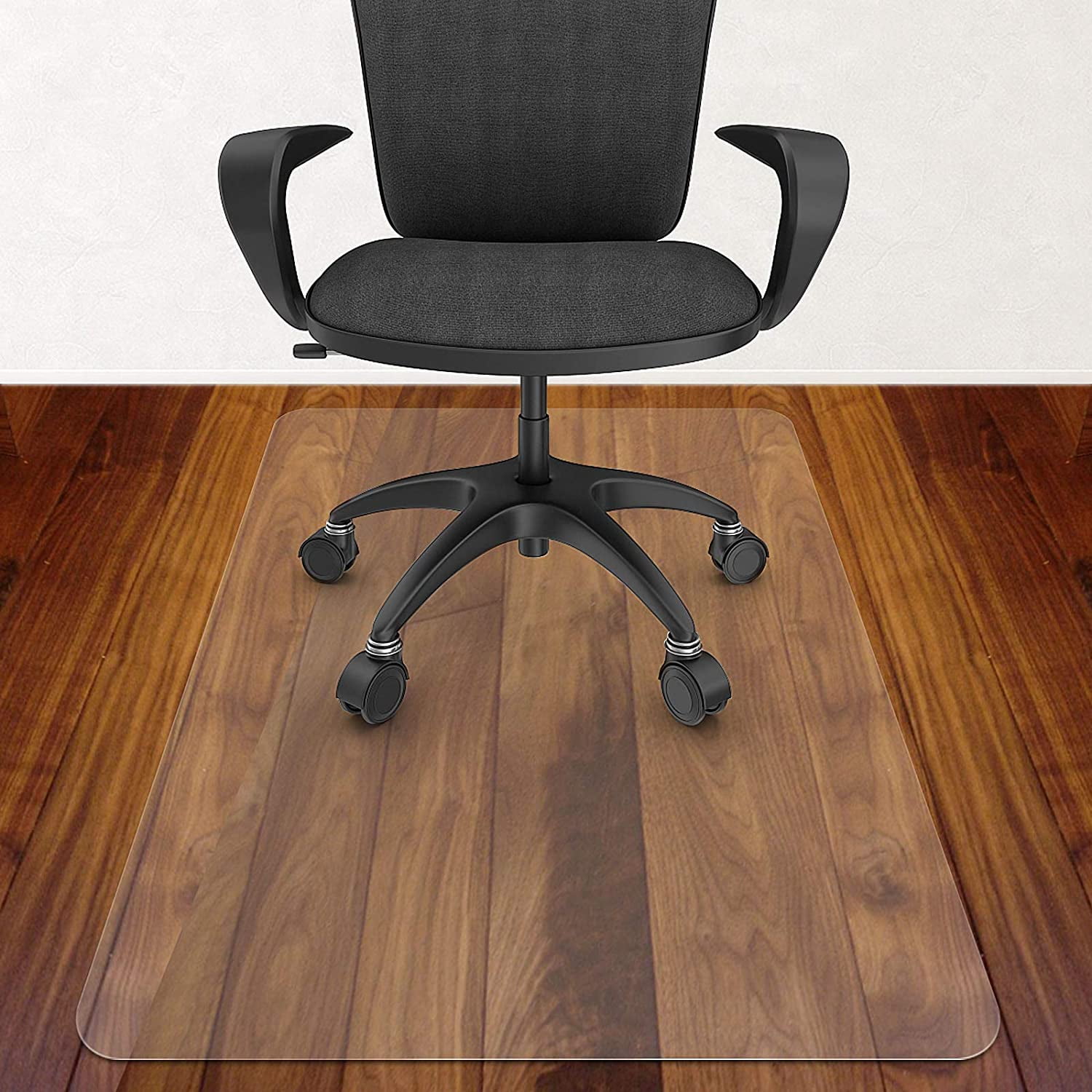Best Features of Rolling Desk Chairs for Carpets: Desk Chair That Rolls On Carpet

Choosing the right desk chair can significantly impact your comfort and productivity, especially if you work from home on carpeted floors. A chair that rolls smoothly and efficiently across carpet requires careful consideration of several key features. This section will delve into the details of what makes a great rolling desk chair for carpet use.
Ideal Wheel Design for Smooth Carpet Rolling
The wheels are the crucial component for smooth carpet rolling. The ideal design incorporates several factors. Hard, small wheels are unsuitable; they’ll likely get stuck or damage the carpet fibers. Instead, look for larger diameter wheels (at least 2 inches) made from a soft yet durable material like polyurethane or soft rubber. These materials offer sufficient grip to prevent slipping while minimizing friction and carpet damage. The construction should be robust, with a strong core to prevent wheel deformation under pressure. A good wheel will have a smooth, rounded edge, preventing it from snagging on carpet fibers.
Chair Base Stability and Weight Distribution for Carpet Use
A stable base is paramount for safe and comfortable rolling on carpet. The weight of the chair and user should be evenly distributed across the base to prevent tipping or wobbling. Five-star bases are generally preferred for their superior stability compared to four-star or three-star bases. The wider the base, the better the stability, especially on carpet. A heavy-duty base constructed from high-quality materials like polished aluminum or heavy-duty nylon will further enhance stability. Consider the material and construction of the connecting components between the base and the chair’s body to ensure they are equally robust.
Comparison of Chair Mechanisms and Their Impact on Rolling Performance
Different chair mechanisms affect rolling performance on carpet. Height adjustment and tilt mechanisms, if poorly designed, can impede smooth rolling. The following table compares different mechanisms:
| Mechanism | Type | Impact on Carpet Rolling | Advantages | Disadvantages |
|---|---|---|---|---|
| Height Adjustment | Pneumatic Lift | Generally smooth, if well-maintained; potential for sticking if gas leaks. | Smooth and easy height adjustment. | Can leak gas over time, requiring replacement. |
| Height Adjustment | Screw-based | Smooth rolling, less prone to issues than pneumatic. | Durable and reliable; less likely to malfunction. | Adjustment can be slower and less precise. |
| Tilt Mechanism | Synchronous Tilt | Generally smooth, but excessive tilt can affect stability. | Allows for simultaneous seat and backrest tilt. | Can be more complex and potentially more expensive. |
| Tilt Mechanism | Simple Tilt | Usually smooth rolling; less complex design. | Simple and affordable; easy to use. | Only tilts the backrest. |
Advantages and Disadvantages of Various Chair Materials
The material of the chair’s seat and back significantly impacts its durability and comfort, especially on carpet.
Nylon: Durable and easy to clean; however, it can feel less comfortable than other materials, especially in warmer climates. It might also be less breathable.
Mesh: Breathable and comfortable; however, it can be less durable than nylon or leather, potentially showing wear and tear over time, particularly with heavy use.
Leather: Durable and luxurious; however, it can be more expensive and requires more maintenance. Genuine leather is more durable and comfortable than faux leather. It’s also more resistant to stains and spills.
Top Brands and Price Ranges

Choosing the right rolling desk chair for your carpeted office can feel like navigating a maze of options. Understanding the top brands and their price ranges is crucial to making an informed decision that fits both your budget and your needs. This section will illuminate the landscape of premium rolling desk chairs designed for carpet, helping you choose the perfect throne for your workspace.
Leading Brands and Their Price Ranges
The market offers a wide selection of rolling desk chairs, but some brands consistently stand out for their quality and carpet-friendly designs. Here are three leading examples, along with their typical price ranges:
- Herman Miller: Known for its ergonomic designs and high-quality materials, Herman Miller chairs often fall within a price range of $800 to $2000 or more, depending on the specific model and features. Their Aeron chair, for instance, is a classic example of their high-end offerings.
- Steelcase: Another industry giant, Steelcase offers a range of ergonomic chairs designed for comfort and durability. Their price range typically sits between $600 and $1800, depending on the chair’s features and customization options. The Leap chair is a popular choice among professionals.
- Humanscale: Humanscale chairs are known for their innovative designs and focus on ergonomics. Their prices generally range from $700 to $1500, with some models exceeding this range. The Freedom chair is a notable example of their commitment to adaptable support.
Warranty and Customer Service Comparison
The longevity and satisfaction derived from your desk chair are significantly impacted by the warranty and customer service provided by the manufacturer. Understanding these aspects is key to making a smart purchase.
- Herman Miller: Typically offers a 12-year warranty on its chairs, along with excellent customer service channels including phone, email, and online resources. They often have a robust network of authorized dealers who provide additional support.
- Steelcase: Usually provides a warranty that varies depending on the specific model, generally ranging from 10 to 12 years. They also offer comprehensive customer service through multiple channels, including a dedicated website for troubleshooting and support.
- Humanscale: Offers warranties that can extend up to 15 years on some models, reflecting their confidence in the durability of their products. Customer service is generally well-regarded, with a combination of online resources and direct contact options.
Factors Influencing Price
Several factors contribute to the price variation among rolling desk chairs designed for carpets. Understanding these factors will help you appreciate the value proposition of different models.
- Materials: High-quality materials like breathable mesh, premium leather, or durable nylon contribute significantly to the cost. Chairs using less expensive materials will naturally have a lower price point.
- Features: Advanced ergonomic features such as adjustable lumbar support, armrests, and headrests increase the chair’s functionality and, consequently, its price. Basic models with fewer adjustments will be more affordable.
- Brand Reputation: Established brands with a reputation for quality and innovation often command higher prices than lesser-known brands. This reflects the investment in research, development, and customer support.
- Manufacturing Processes: Complex manufacturing processes and stringent quality control measures add to the overall cost of production, which is often reflected in the final price.
Buyer’s Guide: Selecting a Rolling Desk Chair for Carpet
Choosing the right chair is an investment in your comfort and well-being. Consider these key factors:
Prioritize ergonomic features like adjustable lumbar support and armrests for optimal posture and comfort.
Assess your budget carefully. High-end chairs offer superior ergonomics and durability but come with a higher price tag. Determine the features that are essential to you and set a realistic budget.
Research warranty and customer service policies. A strong warranty and readily available support can safeguard your investment.
Consider the chair’s material and construction. Durable materials will ensure longevity, while breathable fabrics enhance comfort.
Don’t forget to check the chair’s rolling mechanism. Ensure it’s designed for carpet and moves smoothly without causing damage to your flooring.
Maintenance and Care Tips

Keeping your rolling desk chair in top condition ensures comfort and longevity, especially when used on carpets. Regular maintenance prevents premature wear and tear and keeps your chair rolling smoothly. This section details cleaning methods for various chair materials, maintaining the rolling mechanism, and preventing carpet damage.
Cleaning Different Chair Materials
Proper cleaning methods vary depending on your chair’s upholstery. Using the wrong cleaning solution can damage the material, so always test any cleaner on an inconspicuous area first.
- Fabric: For everyday cleaning, use a soft brush attachment on your vacuum cleaner to remove dust and loose debris. For stains, blot (don’t rub!) with a damp cloth and mild detergent. Allow to air dry completely. For more stubborn stains, consider a fabric upholstery cleaner specifically designed for your fabric type. Always follow the manufacturer’s instructions.
- Leather: Leather requires a more gentle approach. Wipe clean with a damp cloth and a mild leather cleaner. Avoid harsh chemicals and excessive moisture. Condition your leather chair periodically with a leather conditioner to keep it supple and prevent cracking. Regular dusting with a soft cloth will also help maintain its appearance.
- Mesh: Mesh chairs are generally easy to clean. Use a damp cloth and mild detergent to wipe down the mesh surface. For stubborn stains, a gentle all-purpose cleaner might be necessary. Always ensure the mesh is completely dry before use to prevent mold or mildew growth.
Maintaining the Rolling Mechanism
The rolling mechanism is crucial for smooth operation, particularly on carpets. Regular maintenance is key to preventing issues.
Regularly inspect the wheels for any debris buildup. Use a small brush or compressed air to remove dust, hair, and fibers that may be obstructing the wheels. If the chair is still difficult to roll, check the caster stems (the parts connecting the wheels to the chair base). If they’re stiff or rusty, lubricating them with a silicone-based lubricant can significantly improve mobility. Avoid oil-based lubricants, as they can attract dust and dirt. If the problem persists, you may need to replace worn-out wheels or the entire rolling mechanism. A replacement can often be purchased from the chair manufacturer or online retailers.
Preventing Carpet Damage, Desk chair that rolls on carpet
Protecting your carpet from damage caused by your rolling chair is essential. Strategic placement and usage can minimize wear and tear.
| Chair Placement | Chair Usage | Carpet Protection |
|---|---|---|
| Avoid placing the chair on high-pile carpets, as the wheels may get stuck or cause damage. Opt for low-pile carpets or rugs designed for high-traffic areas. | Avoid abrupt, jerky movements that could snag the carpet fibers. Move the chair smoothly and deliberately. | Consider placing a protective rug or mat under the chair to cushion the impact and prevent wear. Choose a rug with a non-slip backing to prevent it from shifting. |
